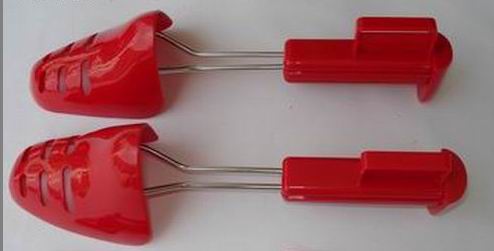Completion of the imposition does not mean that the composing work is over. We have another very important task, the drawing of the die pattern.
After each printing product is finished in the printing process, it must be divided into individual finished products. For example, the above example of imposition will be divided into eight finished cards after completion of printing. It is not possible to cut with scissors in the segmentation. We have another version of the knife template. Of course, in the general printing industry, you don't have to do your own knife mold. You only need to draw the knife mold line, and then send it to the knife mold factory to make the knife plate from the knife mold factory, and then get it back to the beer machine to beer. Press, and then tick the edge of the paper and put it neatly to the customer.
The drawing of the die line is done on the basis of the printing plate. In fact, it is to draw the line of the actual finished product on the layout of a bleeding plane (without coloring). Let's start the die line. The drawing:
1. The finished size of the card we set above is 120 x 175mm after folding, and 250 x 185mm (containing bleeding) after unfolding.
2. Draw a rectangle with a rectangle tool with a size of 239 x 175mm. Select the rectangle and select the card on the upper left corner of the printing plate. Press the "C" key to align vertically, and press the "E" key to align horizontally. The rectangle is at The center of the card. Adjust the trimming distance to 0.5mm, select the rectangle you just drew, and click the right arrow to move it 0.5mm to the right (because the rectangle does a shrink action, so if you do not move 0.5mm to the right, there will be two sides Each was 5.5mm of bleeding, but our goal was to have a 5mm right side bleeding and a 6mm left side bleeding). Select the Betz curve tool, draw a line with a vertical height of 175mm, align it vertically to the right of the rectangle, adjust the fine adjustment value to 120mm, select the vertical line, click the left direction arrow, the vertical line will divide the rectangle into right 120mm, left 119mm, as shown in Figure 9. Here, the front side is classified as 120mm, and the back side is set as 119mm, because it is feared that the back side of the beer after the beer pressure is not allowed to cause the front side to be out of the front. After reduction of 1-2mm, it will not worry about the finished product meeting. There is a flaw in the back (that is, the back of the card seen from the front of the card).
3, select the rectangle (the border is set to a solid line that requires cutting) and the vertical line (the border is set to a dotted line, which means only indentation without cutting) and grouped into an object, call the "distortion" dialog box in the "arrangement" , In the "position" item, set the vertical value to -185mm, the horizontal value is 0, then click "apply to the remake object" three times, the left card die line is basically completed; select the four newly created rectangle , In the "Transformation" dialog box set the horizontal value of 249mm, the vertical item is set to 0, and then click "Apply to the remake object", that is, copy the other four die lines; the eight card patterns and the previous settings The positioning rectangle of the mouthpiece and the bleeding position was removed. As a result, only eight rectangular frames remained on the paper surface, as shown in FIG.
At this point, both the printing plate and the knife plate have been completed, and the follow-up work is to produce a film. Normally, four color chips of cyan, magenta, yellow, and black are printed, and one blade is added. If any other process is to be printed, it can be based on Need another film. Because the release and platemaking belong to the work of the printing room, the prepress operation is now complete. (The bleeding set here is 5mm each on the top and bottom, adding up to a total of 10mm of bleeding. This is because large sheets of paper are printed to take care that the paper may be stretched or deformed due to temperature and humidity. The position is not accurate.3mm bleeding is not possible until the general use of 5mm is better.Generally we do design usually use 3mm bleeding, but if the paper is thicker or packaging, I recommend Use 5mm bleeding, but it's best to do your own bleeding cuts, because the output company is used to help you add 3mm cutting lines.This imposition is to try not to waste paper, is eight open paper printing, we provide such a film For others, if you do not make a copy, you will need to export a few copies of the film for the printer to make.)
Plastic Shoe Tree Rack
A shoe tree holds a shoe in its proper shape so it dries out correctly, and keeps the leather from cracking by wicking away moisture. The absorbent wood also helps dry out the lining of shoes so that they don't rot from the inside out.

Shoe Tree
Shoe Tree,Plastic Lady Shoe Tree,Man Shoe Tree,Lady Boot Sheath
Dongguan Meijiamei Decorative Material Co., Ltd. , http://www.cabinet-fittings.com